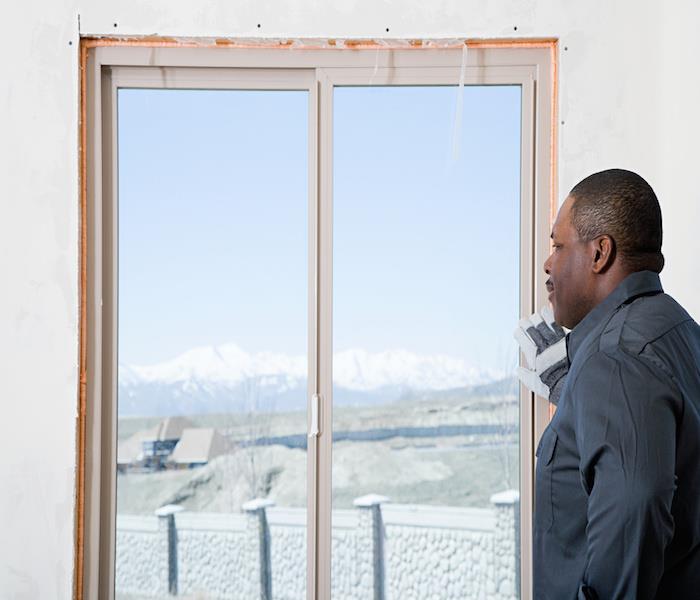7 Systems to Inspect for Water Damage
8/1/2016 (Permalink)
Water damage can be costly and difficult to clean up. If you do suffer water damage in your home or business, you should hire the professionals at SERVPRO to restore the building as attempting to do so yourself could make matters worse. The following are systems to keep an eye on that might be a source of potential water damage.
HVAC Systems
In order to keep a comfortable environment in your home, heating, ventilating, and air conditioning systems need to be properly maintained. Failure to do so could result in costly water damage. Most HVAC systems will produce condensation that must drain. This condensation usually accumulates in pans and then escapes through pipes. If water that accumulates in the pans is not expelled through the pipes, it can potentially lead to corrosion and water overflow that can result in significant water damage.
To ensure that your HVAC systems don’t cause significant and costly damage, include it in your regular maintenance. Make sure that all of the pans, drains, and pumps that collect condensation are functioning properly. This will help you catch any potential hazards before they become serious problems.
Water Heaters
Water heaters are consistently holding and transferring water. So when a water heater fails, it ends up releasing the water that it’s holding which can cause serious water damage to your property. While not always the case, usually water heaters fail over time and water deposits collect at the bottom of the tank and piping.
To keep from suffering water damage due to your water heater, inspect it regularly for any potential signs of failure. Regardless of whether there are problems with it or not, water heaters should be replaced every 10 years. Ways to help avoid water heater-related damage include installing a method of channeling water out of the building such as a sump pump and installing an automatic shut-off valve.
Damaged Roofing
Roofs are designed to keep water out through a system of coverings, flashing, metal work, and sealants. If water does get in through the roof, it can cause damage such as rot or mold growth in the building as well as structural damage. Keeping an eye on the roof through regular visual inspections will help you ensure that all the roofs draining systems are working properly and that there is no damage in the roof that could cause a leak.
Windows
Windows contain caulk and seal that are meant to keep water from entering the home. However, they require some routine maintenance to ensure that they are water tight. If water is able to get through, it has the potential to cause significant damage. Keeping an eye on the windows to ensure no water is getting through and applying caulk or repairing sealant when necessary will help ensure the building is being protected from potential water damage.
Exterior Walls
While the exterior walls of a building are designed to shed water, they are not designed to protect against standing water. If standing water does push against the exterior walls, it has the potential to deteriorate the protective layers and create space for water to enter. The best way to prevent potential water damage due to standing water is to ensure that the landscaping or grading diverts any water away from the walls so that it doesn’t stand up against the wall.
Freezing
When the temperature drops below freezing, sprinkler systems and water pipes have the potential to freeze. This can cause the systems or pipes to burst creating significant water damage. Pneumatic controls are relied upon by any equipment that contains water usage or produces condensation. These pieces of equipment are especially susceptible to freeze and water bursts. Identifying any equipment that might be susceptible to freezing and insulating any exterior pipes are ways you can avoid potential damage caused by system or pipe bursts.
Sewer Backups
Sewage backups happen when the sewer systems are over capacity or when a blockage is causing a backup. The excess water that comes through a blockage has the potential to force any sewage through floor drains, toilets, and sinks. As these backups tend to happen over time, keeping an eye out for any potential blockages can help prevent future water damage.
Water damage has the ability to cause severe damage to your home and force a costly restoration. These tips will help to prevent potential water damage in areas that may be susceptible to water damage. If you do suffer water damage, make sure to contact that professionals at SERVPRO immediately for a full restoration.






 24/7 Emergency Service
24/7 Emergency Service
